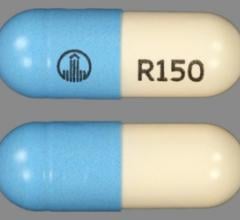October 23, 2012 — A study found that a tailored therapy approach that adjusts the loading dose of clopidogrel according to measured platelet reactivity is superior to prasugrel therapy in reducing high platelet reactivity (a risk factor for worse outcomes) in patients with acute coronary syndrome (ACS). Results of the trial were presented Monday at the 24th annual Transcatheter Cardiovascular Therapeutics (TCT) scientific symposium, sponsored by the Cardiovascular Research Foundation (CRF).
High on-treatment platelet reactivity (HTPR) following clopidogrel and prasugrel is often responsible for repeat occurrences of ischemic events in patients with acute coronary syndrome undergoing angioplasty or percutaneous coronary intervention (PCI). In this study, researchers enrolled 177 patients undergoing PCI for ACS in a prospective multicenter randomized trial comparing a strategy of clopidogrel loading dose-adjustment (CDA) according to platelet reactivity (PR) monitoring with standard prasugrel therapy. Platelet activity was assessed by the vasodilator-stimulated phosphoprotein (VASP) index. CDA according to PR was performed using up to three additional loading doses of clopidogrel to obtain a VASP less than 50 percent. The primary endpoint of the study was the rate of HTPR (which was defined as a VASP index greater than or equal to 50 percent) on discharge. A secondary endpoint was the rate of patients with a VASP less than 16 percent, which is associated with bleedings.
Compared to the first 600 mg loading dose of clopidogrel, the prasugrel group had greater platelet inhibition and a lower rate of patients with HTPR (25.8±23.4 versus 45.5±21.7 percent; p<0.0001 and 15.7 versus 43 percent; p<0.0001). Similarly, more potent platelet inhibition through CDA significantly reduced PR and the rate of HTPR compared to a single loading dose of clopidogrel (30.9±13.9 percent; p<0.0001 and 43 to 2.3 percent; p<0.001).
Following CDA, the rate of patients with HTPR was significantly lower in the CDA group compared to the prasugrel group (2.3 versus 15.7 percent; p=0.005). In addition, fewer patients in the CDA group had a VASP less than 16 percent on discharge (14.6 percent versus 53.4 percent; p<0.0001).
“These results indicate that a strategy of platelet reactivity monitoring is superior to standard prasugrel therapy, reducing the rate of high on-treatment platelet reactivity in patients with acute coronary syndrome. It also seems to prevent excessive platelet reactivity inhibition. These findings suggest that platelet reactivity monitoring could help tailor therapy in patients at high bleeding or ischemic risk,” said lead investigator, Laurent Bonello, M.D., from the Hôpital Universitaire Nord in Marseille, France.
The trial was funded by the Assistance Publique-Hopitaux de Marseille. Bonello reported lecture and consultant fees from AstraZeneca, Eli Lilly, Sanofi and a research grant for AstraZeneca.
For more information: www.crf.org


 August 28, 2023
August 28, 2023 








